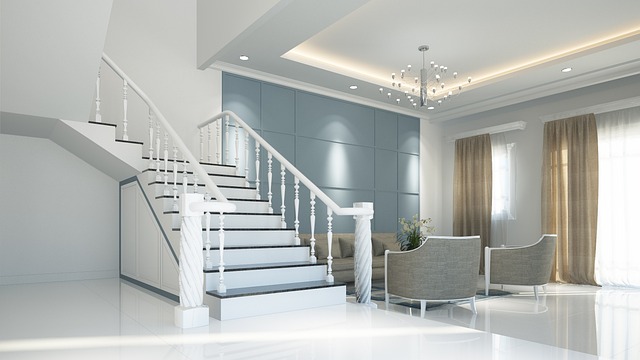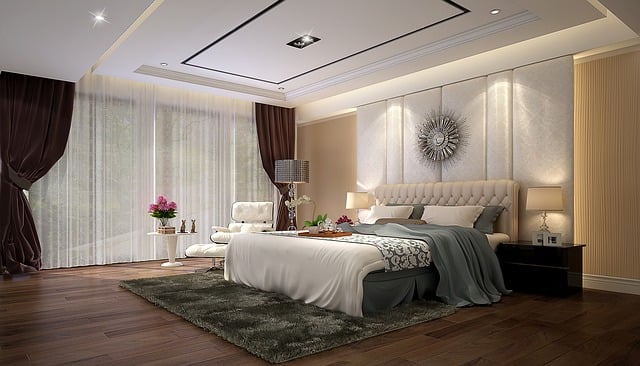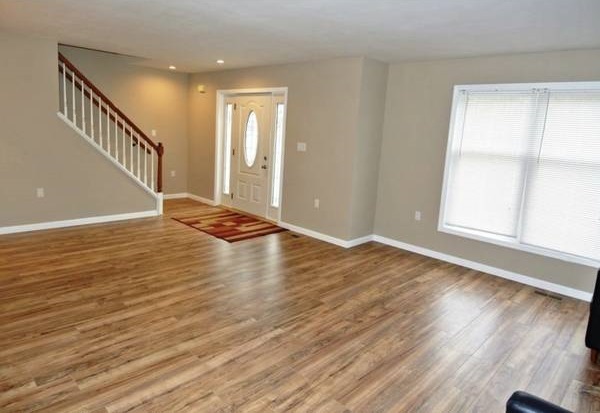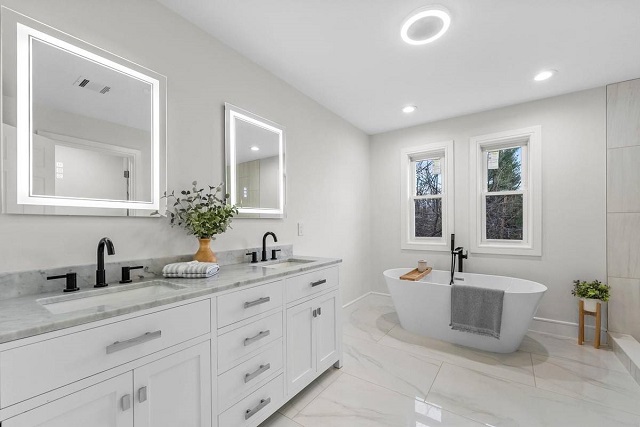Cost of Interior Painting
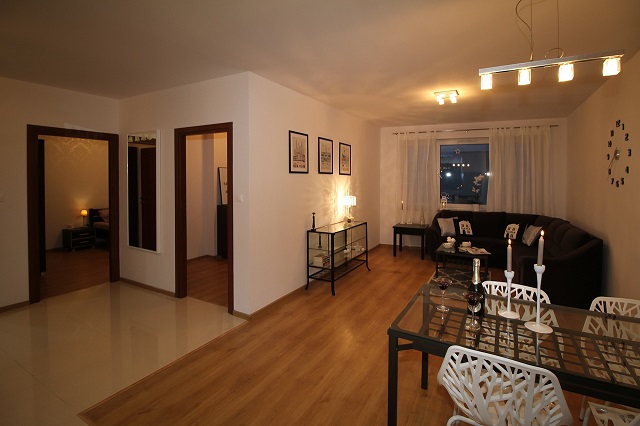
Table of Contents
Factors Affecting the Cost of Interior Painting
When planning to give your home a fresh new look, one of the key considerations is the cost of interior painting. Numerous factors can influence the overall cost, making it essential to understand each of them before setting a budget. By doing so, you can ensure that the final result meets your expectations without breaking the bank. Here are some of the key factors that affect the cost of interior painting:
1. Size of the Room: The square footage of the room plays a significant role in determining the cost of interior painting. Generally, larger rooms require more paint and additional time to complete, resulting in higher costs.
2. Paint Quality: The quality of paint you choose can greatly impact the cost. High-quality paints often carry a higher price tag, but they tend to provide better coverage, durability, and a longer-lasting finish. While opting for cheaper paint may help save money upfront, it may result in the need for more frequent repainting, ultimately increasing long-term costs.
3. Surface Preparation: The condition of the walls before painting can also affect the overall cost. If the walls require extensive repairs, including patching holes, sanding, or priming, the additional labor and materials can add to the final price.
4. Number of Colors: Using multiple colors in a room can increase the cost of interior painting. Each additional color requires additional time, labor, and materials for proper application.
5. Accessibility: The ease of access to the room affects the cost, especially for multi-story homes or rooms with limited access. Difficult-to-reach areas may require additional equipment or scaffolding, leading to increased labor costs.
6. Furniture and Obstacles: The presence of furniture, fixtures, or other obstacles in the room can impact the cost of interior painting. Moving and covering these items to protect them from paint splatters takes time and effort, which can affect the overall price.
7. Additional Services: Additional services such as removing wallpaper, repairing drywall, or applying special finishes will also add to the cost. These extra services require specialized knowledge and expertise, contributing to an increased price.
Understanding the Average Cost of Interior Painting per Square Foot
When planning to repaint the interior of your home, it is important to have a clear understanding of the costs involved. One of the key factors that determine the overall expense is the cost per square foot. This measure gives you an estimate of how much you can expect to pay based on the size of the area to be painted.
The average cost of interior painting per square foot varies depending on various factors. The size and complexity of the project, the quality of paint to be used, and the region you are in can all impact the final cost. Additionally, factors such as the number of coats needed, the condition of the walls, and any necessary repairs or preparation work can also affect the overall expense.
As a general guideline, the average cost of interior painting per square foot ranges from $2 to $6. However, it’s important to note that this is just an estimate and will vary depending on the factors mentioned earlier.
For larger areas, the cost per square foot tends to be lower compared to smaller rooms. This is because there are economies of scale at play. Nonetheless, if the area to be painted includes intricate architectural details, textured walls, or requires extensive prep work, the cost per square foot may increase.
To get an accurate estimate, it is best to consult with professional painters who can assess the specific details of your project. They will consider factors such as the size of each room, the height of the ceilings, the condition of the walls, and any specific requirements you may have. With this information, they can provide you with a detailed breakdown of the costs involved.
It’s worth mentioning that the cost per square foot typically covers the paint and the labor, but excludes any additional expenses. These additional expenses, such as primer, painting supplies, and other necessary materials, should be factored into your budget.
To ensure you are getting the best value for your money, it is advisable to obtain multiple quotes from reputable painters in your area. This will allow you to compare prices, services offered, and the quality of workmanship. Look for painters who have a good track record, positive reviews, and are transparent about their pricing structure.
Factors to Consider When Budgeting for Interior Painting
When planning for an interior painting project, it is essential to consider all the expenses that may arise. While the cost of paint and labor plays a significant role in determining the overall expense, there are additional factors to consider. These factors can significantly impact the budget and should not be overlooked.
One crucial factor to consider is the condition of the walls. If the walls have cracks, holes, or other imperfections, they will need to be repaired before painting can occur. This can add to the overall cost of the project, as the repairs will require additional materials and labor.
Another factor that affects the cost of interior painting is the size of the room. A larger room will require more paint and more labor, driving up the cost. Additionally, if the room has high ceilings or intricate details such as moldings or trim, the cost may further increase.
The type of paint chosen also plays a role in the overall cost. Higher quality paints tend to be more expensive but may result in a longer-lasting finish. Additionally, if multiple coats of paint are required, the expense will increase. It is essential to factor in the cost of paint when budgeting for an interior painting project.
Another expense to consider is the need to move or cover furniture. If the room being painted is furnished, it may be necessary to move the furniture to another location within the home or cover it with protective materials. This can add to the overall cost of the project, particularly if professional movers or additional labor is required.
It is worth noting that any additional work requested, such as decorative finishes or wallpaper installation, will also increase the cost. These unique finishes often require specialized skills and materials, resulting in a higher price tag.
To minimize costs, there are a few tips to keep in mind. First, consider doing some of the preparation work yourself, such as cleaning or repairing the walls. This can help reduce labor costs. Second, comparison shop for paint and supplies to find the best deals. Lastly, consider timing your project during off-peak seasons, as many interior painting companies offer discounted rates during slower periods.
Tips for Minimizing Interior Painting Costs
When it comes to giving your home a fresh, new look, interior painting is often the go-to solution. However, the cost of a professional paint job can quickly add up, especially if you have a large space or multiple rooms to paint. To help you stick to your budget, here are some valuable tips for minimizing interior painting costs:
- DIY vs. Hiring a Professional: One of the most effective ways to save money on interior painting is by taking on the project yourself. However, keep in mind that painting can be time-consuming and labor-intensive, so make sure you have the necessary skills and equipment before embarking on a DIY painting project. If you’re not confident in your abilities or simply don’t have the time, consider hiring a professional painter. While it may be a higher upfront cost, professional painters have the expertise and tools to get the job done efficiently and with a high-quality finish.
- Proper Surface Preparation: Before you start painting, it’s crucial to properly prepare the surfaces you’ll be working on. This includes cleaning walls, sanding any imperfections, and applying primer if necessary. By investing time in surface preparation, you’ll ensure that the paint adheres properly and lasts longer, saving you money in the long run.
- Choose the Right Paint: While it may be tempting to opt for cheaper paint options, it’s important to consider the long-term cost-effectiveness. High-quality paint may be more expensive upfront, but it often requires fewer coats, lasts longer, and provides better coverage. Additionally, certain paints are designed to be more resistant to wear and tear, which can save you money on future touch-ups and repainting.
- Calculate the Amount of Paint Needed: Avoid wastage and unnecessary expenses by accurately calculating the amount of paint you’ll need for your project. By measuring the dimensions of the walls and ceilings and consulting a paint coverage guide, you can estimate the required quantity of paint. This will help prevent overbuying and reduce costs.
- Compare Quotes: If you decide to hire a professional painter, don’t settle for the first quote you receive. Request estimates from multiple contractors and compare their prices, services, and reputation. This will ensure you get the best value for your money without compromising on quality.
- Time your Project Wisely: Consider painting during the off-peak season, such as winter or early spring, when painting services are generally less in demand. During these periods, you may be able to negotiate lower prices or take advantage of special promotions. Additionally, scheduling your project during weekdays rather than weekends may also lead to lower rates.
- Focus on Priority Areas: If you’re on a tight budget, prioritize the areas that need the most attention. Instead of repainting the entire house, consider focusing on high-traffic areas like the living room, kitchen, or hallway. Giving these spaces a fresh coat of paint can significantly enhance the look and feel of your home without breaking the bank.
How to Find Affordable and Quality Interior Painting Services
When it comes to giving your home a fresh look, interior painting can be an excellent way to transform your space. However, finding affordable and quality interior painting services can sometimes be a challenge. Fortunately, with some research and careful consideration, you can find the right professionals to meet your needs and budget.
One of the first steps in finding affordable and quality interior painting services is to ask for recommendations from family, friends, or neighbors who have recently had their homes painted. Their personal experiences and satisfaction with the painters they worked with can give you valuable insights and help you make an informed decision.
Another effective way to find reliable painting contractors is by conducting an online search. Read customer reviews and testimonials on reputable websites to gauge the reputation of different companies. Look for painters with consistently positive feedback and a portfolio that showcases their expertise in interior painting.
Once you have gathered a list of potential painters, request estimates from at least three different contractors. This will enable you to compare prices and services offered. Be sure to provide each contractor with detailed information about the size of the area to be painted and any specific requirements you may have. This will ensure that the estimates you receive are accurate and tailored to your project.
When reviewing the estimates, be cautious of extremely low prices. While affordability is important, excessively low prices may indicate subpar materials or inexperienced painters. Striking a balance between cost and quality is crucial to ensure a satisfactory result.
In addition to cost, evaluate the credentials and experience of the painters you are considering. Ask about their licensing, insurance coverage, and years of experience in the industry. A professional and experienced painting contractor will be able to provide you with references and demonstrate their expertise in handling interior painting projects.
It can also be helpful to inquire about any warranties or guarantees offered by the painting contractor. This can provide you with peace of mind knowing that they stand behind their work and are committed to your satisfaction.
Lastly, before making a final decision, schedule consultations with the painters who have provided the most promising estimates. During these meetings, discuss your vision, color preferences, and any other specific requirements you may have. Pay attention to the contractor’s communication skills and their ability to understand and accommodate your needs. A good rapport with your chosen painter will go a long way in ensuring a successful and enjoyable painting experience.
Conclusion
In summary, the cost of interior painting can vary greatly depending on several factors. The average cost per square foot can give you a rough estimate, but it’s essential to consider additional expenses that may arise during the process. By being mindful of these factors and following a few budget-saving tips, you can significantly minimize your interior painting costs. Remember to research and compare different painting services to find affordable options that still deliver high-quality results. With careful planning and consideration, you can transform your interior space without breaking the bank.



